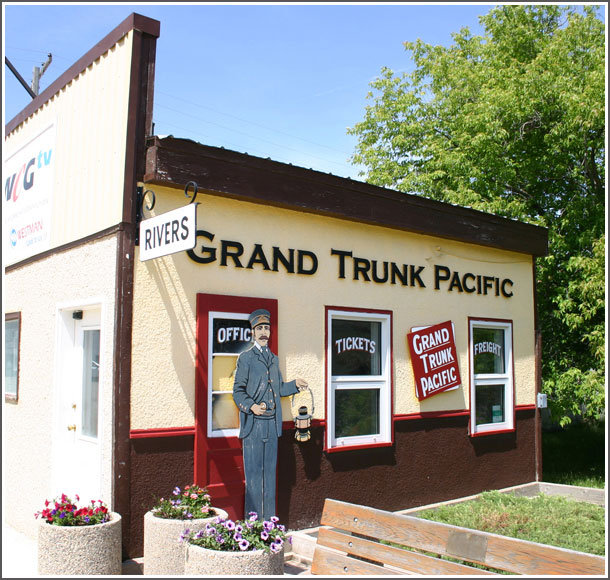
|
Restoration & Renewal
By 1960, the Golden Age of railway travel was over. Increasingly,
people were choosing the flexibility of the family car or the speed of
air travel. Travelling by rail remained an option in the more densely
populated part of the country, but on the prairies the numbers just
weren’t there to keep passenger trains running on the branch
lines.
Nationally, traffic peaked during World War II. By the 1960’s passenger
service was no longer profitable for CN and CP. The federal government
stepped in with subsides and a level of service was maintained.
By 1977 passenger numbers were down below five million (compared with a
wartime peak of 60 million). The Canadian Government created in VIA
Rail Canada in 1977 as a national passenger rail company.

The
Stationette
The following decades brought cuts in service across the country
despite periodic efforts to revitalize rail travel in general.
As we moved into the new millennium, there was a resurgence of interest
in rail travel as an environmentally sustainable transportation option.
Since 2012 there have been no major service cuts, and some innovations
and improvements.
We now see the possibility that the Rivers Station, idle for all these
decades, may be reborn as a transportation hub for a new generation.
The Rivers Train Station Restoration Committee members are dedicated to
the Restoration, Renovation & Rejuvenation of the Rivers Train
Station to a viable property for heritage preservation and economic
development. To ensure the Community & Area have an opportunity to
Connect with the Past while creating a Vision for the Future.
The station is a now federally designated heritage site.
The method of restoration will be carried out following the most
environmentally efficient criteria making this Canada's first 'green'
heritage train station!
Funding for restoration is being made possible through grants,
corporate and individual support, as well as fundraising.
VIA Rail Canada has sited Rivers as the only boarding station west of
Portage la Prairie into eastern Saskatchewan, and between the north and
south Manitoba borders.
So the story is not over. It began with the decision by the Grand Trunk
Pacific to cross the Little Saskatchewan River here and to create a
divisional point. It continued through decades of progress, setbacks,
and more progress.
It continues.

Rivers
celebrates its railway heritage in a variety of ways as it continues to
look forward.
|
|